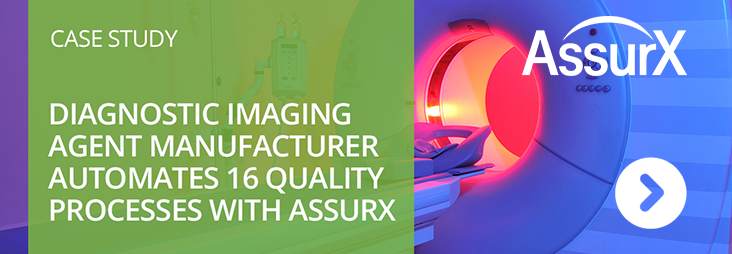July 13, 2020
This blog is the second of a three-part series on QMS implementation best practices. Read the first blog article for a best practices approach for organizing and managing a QMS implementation team. Sign up for our blog to receive part three and future communications.
Every organization needs to start somewhere when enhancing their quality management system. If you’re not currently using an automated Quality Management System (QMS), it’s likely your organization is handling information in a disjointed way. Manual processes and restrictive access may be decelerating your ability to manage issues and align with compliance requirements. Still today, manual and resource-intensive quality management procedures are still not uncommon, even in the most regulated industries.
While initially, it may seem overwhelming, a successful QMS implementation depends on the development and execution of the quality plan. Within that plan are an organization’s quality goals and objectives, and the processes and controls to achieve them. Industry-leading quality management system (QMS) processes are designed and executed by the implementation team in alignment with the quality plan.
Assess Your Current Quality Processes
Start your QMS assessment by defining all processes in your current quality management system. Establish a list of all tasks, who manages them, how they are performed today, and where bottlenecks commonly arise. The results will help identify bottlenecks, gaps, and also what does work to consider in mapping out your automated processes.
When documenting your processes, consider the following:
- Where does the information originate? Does it enter the system timely and correctly?
- How long does it take for corrective action to commence? What is the system for prioritization?
- Is there duplication based on several points of ingress?
- Is the information reliable/unchanged as it goes through a process?
- How is information shared and reconciled if it concerns multiple organizational units?
- How is an issue closed, and where does the information reside? Is it secure?
- Is all information readily accessible by authorized people at any given time? How long does it take to access?
The time, steps, and dependencies you establish for how long each process is taking now are the keys to understanding how to streamline your electronic quality system. Additionally, you would want to work with an experienced QMS vendor team to utilize their depth of real-world expertise to identify common points of weakness and risk.
Use a Risk-Based Approach
The FDA and EMA expect quality processes to be designed using a risk-based approach. In short, this means that an electronic solution should integrate risk management to help prioritize tasks based on the level of risk each task presents.
Manual and legacy quality systems too often rely on reactivity where risk detection is done after the fact. A risk-based approach enables a controlled means of issue resolution with the highest priority first. Address the risks that can impact operations and the controls for managing those risks at the earliest stage of your process design. The result is a well-defined plan that demonstrates the ability to address and mitigate issues based on severity. Risks of varying severity exist throughout the quality value chain. In addition, consider how high-risk events may impact other areas of the business, and how to collaboratively address them.
Consider the risks that may negatively impact your operations, including:
- Device/product type and adverse event classifications
- Frequency or escalation of the adverse event type(s)
- Defects in supplier components
- Shortages in supplies/inventory
- Gaps in training
- Frequency of recurring issues
- Results of delays in executing tasks
Data received from risk analysis plays a critical role in investigating issues, correcting them, and instituting change.
Get Ready for Change
As part of your assessment, consider the impacts of changes across the quality system and what (if any) actions you have in place now for managing change. Change management is a process within itself, and vital to maintaining a compliant QMS and increasing time to market. Without a process in place for managing and documenting change, process effectiveness will fail. For any process to be optimized, it should not only be efficient but also easily adaptable to change. Read here for further insight on this topic.
Consider the many change areas that will impact your quality flows, including:
- Identifying, documenting, and implementing improvements
- Implementing corrective actions that result from root cause analysis of nonconformances
- Departure or addition of new employees
- Changes in regulatory requirements
- Adding workflows that impact existing processes
- New design/measurement/KPI requirements
- Customer changes
- Supplier changes
Ensure your processes include a defined methodology for handling change. Define the controls within your system to maintain the integrity of your QMS and the ability to continue to provide conforming products and services during any changes.
Case in Point: How a Successful QMS Implementation Saves 10,500 Manual Work Hours
The benefits of a complete and thorough assessment and documentation of current processes can’t be understated. It accelerates eQMS implementation time and also provides baseline metrics needed to clearly determine the ROI and success rates of your eQMS program.
For example, a pharma and chemical company completed a thorough assessment of their pre-electronic processes for managing adverse events. The company was tracking and managing their adverse events using Excel spreadsheets and Word Documents. Also, they would hold frequent meetings to discuss new and pending issues, made extensive telephone calls to resolve issues and calculated that it spent an average of 800 hours per regulatory audit in preparation. They created an outline of each workflow, times to completion, and noted areas where risks, delays and disconnections existed. This set the baseline by identifying all points for improvement.
Before implementing its automated system, the company reviewed all process and started rolling out the most critical operational processes first. As a result of a successful QMS implementation for corrective and preventive actions (CAPA) and supplier management, the organization reduced manual work hours by 10,500 in the first year. This time is now spent proactively improving quality. Read the story.
Conclusion
In summary, documenting all your current quality procedures in practice leads to the successful adaptation to eQMS. Use risk as a barometer for prioritizing events and make sure each process enables change that drives improvement. Identify the best starting point and robust endpoints for establishing an automated workflow for each process. Always focus on gathering the most information from inception for continual upstream progress, rather than having to perform downstream damage control. Following these practices contributes directly to product quality, time to market, consumer safety, and the ability to meet future changes.



